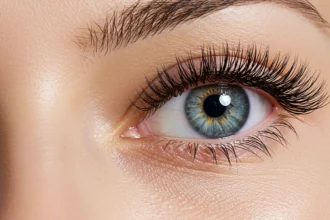When we think about protecting ourselves from the harmful effects of the sun, we tend to focus on outdoor activities. However, there’s an often-overlooked risk that many face daily sun exposure while driving. Sitting in the driver’s seat might feel safe, but your car windows offer limited protection against UV rays, which can have long-term consequences for both your skin and overall health. This article examines the hidden dangers of sun exposure in vehicles and highlights solutions to mitigate these risks effectively.
Understanding UV Rays and Their Impact
What Are UV Rays?
Ultraviolet (UV) rays are a form of electromagnetic radiation emitted by the sun. They are classified into UVA and UVB rays. While UVB rays are responsible for sunburn, UVA rays penetrate deeper into the skin and contribute significantly to premature aging and skin cancer. Both types pose risks, even when exposure occurs through a vehicle’s windows.
How UV Rays Affect You While Driving
Although car windshields are typically treated to block nearly all UVB and some UVA rays, side and rear windows often do not offer similar levels of protection. This means that during long drives, especially during peak daylight hours, your skin and eyes are exposed to harmful rays. Studies have shown that drivers often exhibit more UV damage on the left side of their bodies, which directly correlates to greater exposure from side windows.
Health Risks Associated With Sun Exposure in Cars
Skin Damage
Prolonged exposure to UV rays through car windows can cause cumulative skin damage. Over time, this leads to photoaging, which presents as wrinkles, dark spots, and loss of elasticity. Even more concerning, consistent exposure increases the risk of developing skin cancer, one of the most common forms of cancer worldwide.
Eye Health Concerns
Your eyes are especially vulnerable to UV damage. UV exposure can contribute to cataracts, macular degeneration, and even photokeratitis, which is a painful condition akin to a sunburn on the eye’s surface. Since car windows don’t necessarily block all UV rays, drivers and passengers alike must take precautions.
Temperature and Discomfort
Beyond the more severe risks, sun exposure while driving can also cause discomfort. Sunlight increases the cabin temperature, making it uncomfortable for those inside the car. This excessive heat can lead to dehydration, fatigue, or diminished focus—factors that could pose additional risks for drivers.
Effective Ways to Reduce Sun Exposure While Driving
Protective Films for Windows
One highly effective solution for minimizing UV exposure is applying protective films to your vehicle’s windows. These films are designed to block UV rays without significantly affecting visibility. For instance, window tint is a popular option, as it not only cuts down on UV exposure but also reduces glare and keeps the interior cooler.
Wear Sun Protection
Even with protective films, wearing sunscreen is a smart additional layer of protection. Choose broad-spectrum sunscreens with SPF 30 or higher and remember to apply them generously on all exposed skin, including your hands, arms, face, and neck.
Invest in Accessories
Accessories like sunshades, visors, and UV-blocking driving gloves can also help reduce exposure. Sunglasses with UV protection are essential for shielding your eyes, and they also contribute to better driving visibility by reducing glare.
Best Practices for Safe Driving Under the Sun
Plan Your Travel Times
If possible, avoid driving during peak sunlight hours, typically between 10 a.m. and 4 p.m. This can significantly reduce your sun exposure.
Park Smartly
When parking, try to find shaded areas or use a car cover to block direct sunlight from entering the vehicle. This can prevent the interior from heating up excessively and reduce your exposure to harmful rays when you return to your car.
Monitor Weather Conditions
Sun intensity can vary depending on your location and the time of year. Keep an eye on UV index forecasts, and take extra precautions on days when UV levels are high.
The Bigger Picture on Prevention
Awareness is the key to mitigating the hidden risks of sun exposure while driving. Incorporating preventive measures like protective films, sunscreen, and UV-blocking accessories into your routine will dramatically reduce your exposure to harmful rays. While you may not notice the effects immediately, prioritizing sun safety today can prevent serious health concerns in the future. Ensure that your daily commute or long road trips don’t come with long-term consequences from unprotected sun exposure. A small adjustment in your habits can provide lasting protection for your skin, eyes, and health.

















